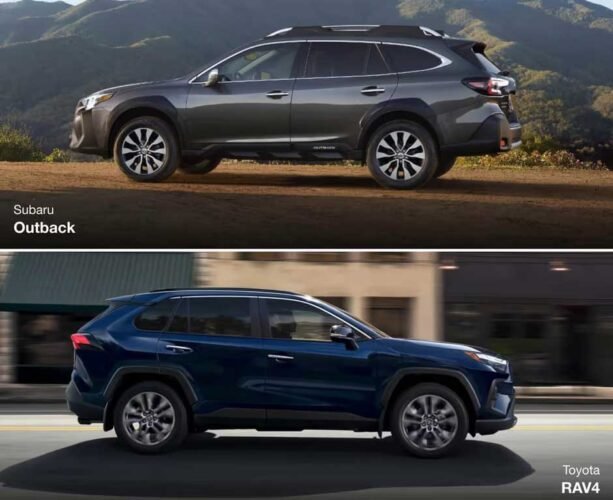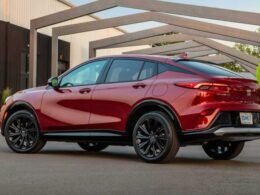As electric vehicles continue to grow in popularity, drivers are increasingly faced with a pivotal question: go all-in on electric, or play it safe with a hybrid? The Kia EV6, a bold all-electric crossover, has quickly made waves for its sleek design, fast charging, and engaging performance. But hybrid alternatives—such as the Toyota RAV4 Hybrid, Hyundai Tucson Hybrid, or even Kia’s own Niro Hybrid—still offer practical benefits for drivers not yet ready to rely solely on electricity. If you’re comparing options at a Kia dealership in Plattsburgh, NY, it’s crucial to weigh the pros and cons of the Kia EV6 against its hybrid competitors to decide which vehicle best fits your lifestyle and budget.
All-Electric vs. Hybrid Powertrains: The Basics
The Kia EV6 is a 100% battery electric vehicle (BEV), meaning it runs solely on electric power stored in its battery pack. It produces zero emissions and needs to be recharged using a home charger or public EV station.
Hybrid vehicles, on the other hand, combine a gasoline engine with an electric motor. They don’t require charging, as the battery is recharged during braking and engine use. Plug-in hybrids (PHEVs) go a step further by offering a short all-electric range before switching to hybrid mode.
Understanding these fundamental differences is key. If your priority is eliminating fuel stops entirely and you’re comfortable with charging, the EV6 offers a true electric driving experience. If you want better fuel economy but still need flexibility, a hybrid might be more practical.
Performance and Driving Experience
The Kia EV6 delivers a surprisingly thrilling driving experience. Even the base model offers rapid acceleration thanks to the instant torque of its electric motors. The dual-motor all-wheel-drive versions boast 320 horsepower and can go from 0 to 60 mph in under five seconds. Its low center of gravity and stiff chassis make handling crisp and composed.
Hybrid alternatives, while efficient, typically don’t offer the same level of performance. Vehicles like the Toyota RAV4 Hybrid or Honda CR-V Hybrid are tuned more for comfort and economy. While they’re competent on the road, they can’t match the EV6’s engaging dynamics and acceleration. If driving enjoyment is high on your list, the EV6 holds a clear edge.
Range and Refueling Convenience
The EV6 comes with two battery options, offering up to 310 miles of range on a single charge. For most daily drivers, this is more than enough. Additionally, the EV6 supports ultra-fast DC charging, allowing it to regain about 70 miles in under 5 minutes, or an 80% charge in just 18 minutes at a high-speed charging station.
Hybrids, however, offer unbeatable convenience when it comes to refueling. A hybrid crossover like the Hyundai Tucson Hybrid can travel over 500 miles on a full tank, and refueling takes just a few minutes at any gas station. You don’t have to worry about charger availability, especially in remote or rural areas.
If your driving routes often take you long distances without guaranteed charging infrastructure, a hybrid might still be the safer option. However, for urban and suburban users with access to home or public charging, the EV6 provides both range and convenience.
Environmental Impact and Emissions
When it comes to minimizing your carbon footprint, the EV6 is the obvious winner. Since it’s a full-electric vehicle, it produces zero tailpipe emissions. For drivers focused on reducing their environmental impact, this is a major benefit. Pair it with clean energy charging at home, and you can significantly lower your personal transportation emissions.
Hybrids, while better than traditional gas-powered vehicles, still burn fossil fuels and emit greenhouse gases. Plug-in hybrids offer partial electric driving but eventually rely on gasoline. While they’re a better transitional choice for some drivers, they don’t provide the same clean energy benefits as the fully electric EV6.
Interior Comfort and Tech Features
The Kia EV6 boasts a modern, minimalist interior with futuristic styling. It features a curved dual-screen display, touch-sensitive climate controls, and generous legroom in both rows. The flat floor (thanks to the lack of a transmission tunnel) adds to its spacious feel.
Hybrid vehicles like the Toyota RAV4 or Ford Escape Hybrid offer practical, well-designed cabins, but they lean more traditional in style and layout. Most still feature physical buttons and conservative dashboards. While they’re comfortable and user-friendly, they don’t deliver the same “wow” factor as the EV6’s high-tech cabin.
In terms of tech features, the EV6 comes with standard Apple CarPlay, Android Auto, wireless charging, navigation, and a full suite of driver-assist features like adaptive cruise control, lane keep assist, and collision avoidance. Most hybrids offer similar features, though they may only be available on higher trims.
Cost of Ownership: Purchase Price and Incentives
The initial purchase price of the Kia EV6 is generally higher than most hybrid vehicles. However, federal and state incentives can help bridge that gap. The EV6 may qualify for up to $7,500 in federal tax credits, depending on the trim and eligibility. Some states also offer additional rebates or perks like carpool lane access.
Hybrids often start at lower MSRPs, and while they don’t qualify for federal EV tax credits, some PHEVs may be eligible for smaller incentives. In terms of fuel savings, the EV6 again takes the lead, especially if you charge at home. Electricity costs are typically lower than gasoline, and electric vehicles require fewer maintenance tasks (no oil changes, for instance).
However, hybrid vehicles still offer excellent fuel economy and lower running costs compared to traditional gas cars, especially for drivers not yet ready for full EV charging needs.
Maintenance and Reliability
Electric vehicles like the EV6 require less maintenance over time. With fewer moving parts, no engine oil, and fewer fluid systems, service costs tend to be lower. Brake wear is also reduced thanks to regenerative braking systems.
Hybrids have more complex drivetrains that combine gas and electric components. While they’re generally reliable, they still require routine engine maintenance. Battery replacements in hybrids are rare but can be expensive if they occur outside of warranty.
Overall, the EV6 wins in terms of long-term maintenance simplicity, though both types are reliable with proper care.
Charging Infrastructure vs. Fuel Station Access
One of the biggest considerations for EV buyers is charging infrastructure. While major cities and highways now have growing networks of fast chargers, rural and less populated areas—such as some areas around Plattsburgh—may still have limited options. Planning longer road trips in an EV requires attention to available chargers.
Hybrid vehicles don’t have this issue. Refueling is quick and universally accessible. For drivers who do a lot of spontaneous or remote travel, the ease of finding a gas station may outweigh the benefits of charging.
However, for daily commuters or homeowners with access to a Level 2 charger, the EV6 is incredibly convenient. You can plug in overnight and start each day with a full “tank,” skipping gas stations altogether.
Conclusion
Choosing between the all-electric Kia EV6 and its hybrid rivals depends heavily on your lifestyle, driving habits, and priorities. If you’re ready to embrace electric driving, have access to charging, and want a high-tech, low-maintenance vehicle with standout performance, the EV6 is a top-tier choice. On the other hand, if you value traditional fueling convenience, lower initial costs, and extended driving range without recharging, a hybrid may suit your needs better. Either way, you’ll be investing in a smarter, more sustainable future.










